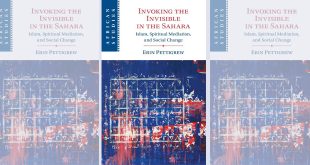In the article “Offering Complete or Shortened Prayers? The Traveler’s Salat at the “Holy Places””, Liyakat Takim discusses the prayer of a traveler at places designated as holy in Shi‘i hadith and juridical literature.
The provenance of a distinct Shi‘i school of law can be traced to the time of the fifth Shi‘i imam, Muhammad al-Baqir(d. 735). Respected by and contemporary to many Sunni jurists in Medina and Kufa, he is credited with laying the foundations of what was later called the Ja‘fari school of law. Al-Baqir is also the first Shi‘i figure from whom a vast corpus of hadith literature has been transmitted. His legal formulations were later elaborated on by his son, the sixth Shi‘i imam, Ja‘far al-Sadiq (d. 765) after whom the school was named. Al-Sadiq was contemporary to prominent Sunni jurists like Abu Hanifa (d. 767) and Malik b. Anas (d. 795).
One of the legal issues confronting Muslim jurists was the question of whether a traveler should reduce the number of cycles in her/his prayers. The Qur’an had allowed a traveler to shorten her/his prayers. It stated, “When you travel, there is no blame on you if you shorten your prayers, for fear that the unbelievers may attack you; for the unbelievers are clear enemies to you” (4:101). Based on this verse and other supporting traditions, Shi‘i jurists, who wrote in the tenth and eleventh centuries, stipulated that a traveler must shorten her/his afternoon (zuhr, ‘asr) and night (‘isha’) prayers to two cycles (rak‘as), instead of the mandatory four cycles which s/he would normally recite at her/his place of residence. However, if the traveler stayed at a place for more than ten days, the jurists stated that s/he would no longer be considered a traveler and would then have to offer the complete (tamam) prayers. Shi‘i jurists also stipulated that if the traveler journeys to any of the holy places, s/he has a choice between offering the complete and the shortened (taqsir) prayers even if the traveler stays there for less than ten days.
In this paper, I discuss the prayer of a traveler at places designated as holy in Shi‘i hadith and juridical literature. After examining the traditions on praying at the holy places, I will investigate the factors that were significant in determining which sites were deemed to be sacred.
The paper will also examine the process by which a prominent jurist of the last century, Ayatullah al-Sayyid Abu al-Qasim al-Khu’i (d. 1992) issued a fatwa (juridical edict) regarding the offering of prayers at the holy places. I will demonstrate how, by employing certain methodological devices and principles established in usul al-fiqh (the science of inferring juridical rulings from textual and rational sources), al-Khu’i was able to harmonize apparently contradictory traditions so as to deduce an edict on praying at the holy places. As we shall see, the process of issuing a juridical edict involves a nuanced analysis and synthesis of revelatory sources and human reasoning.
In addition, the paper will discuss the significance of the biographical science (‘ilm al-rijal) in inferring a juridical ruling on prayers at the holy places. I will demonstrate that the principles established in biographical dictionaries had major ramifications in deriving the juridical ruling on the issue. In the process, we will see that polemical and political factors played important roles in the designation of sacred space in Shi‘ism.
 Ijtihad Network Being Wise and Faithful Muslim in the Contemporary World
Ijtihad Network Being Wise and Faithful Muslim in the Contemporary World

